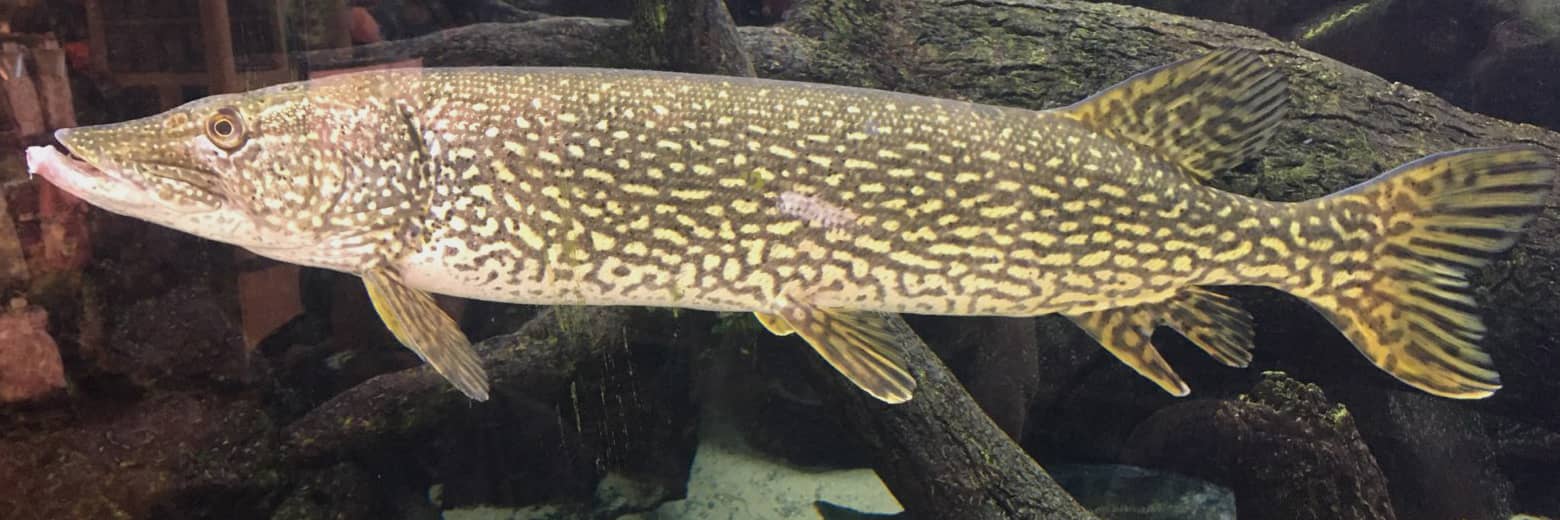
Northern pike are able to tolerate lower levels of dissolved oxygen when compared to other native North Dakota fish species. Simonson Photo
By Nick Simonson
With the early onset of winter across much of North Dakota and record levels of November and December snow covering newly-formed ice on lakes last fall, early guesses were that many of the state’s shallower waters would face winterkill issues resulting from those conditions. With dissolved oxygen surveys underway since last month and running through February, North Dakota Game & Fish Department (NDG&F} officials and staff have confirmed that to be the case on approximately 12 to 15 lakes in the state thus far with as many as 50 susceptible to the effects of low oxygen, according to Fisheries Division Chief Greg Power.
“Our expectations from a couple months ago are being met, unfortunately, that we do have winterkill going on already. I’m guessing somewhere around maybe a dozen to fifteen lakes probably have had significant winterkills and we probably have at least that many on the list [of suspected winterkills], if not more,” Power relates of the results thus far in the ongoing survey process, adding, “we very easily could lose 30, 40 or 50 lakes this winter to winterkill. We’ve had that in the past, we’ve lost 50 lakes in a given winter. The good news is, we went into it with a record number of fishing lakes, so if we lose 50 we still have roughly 400 of them out there,” Power concludes.
Winterkill occurs when dissolved oxygen drops to levels that negatively impact the health of fish species. This process occurs when sunlight no longer reaches plants growing beneath the surface of the water. In seasons where there is little snow cover on the ice, plants are able to continue the process of photosynthesis, albeit less than in summer growing conditions, which puts oxygen into the water around them through respiration. In those winters where snow blocks that residual winter sunlight, the process ends and the breakdown of plant materials begins as they die off. This lack of oxygen entering the water through that diminished plant respiration process and the removal of oxygen through the chemical process of decomposition of dead matter, reduces the level of the gas which is vital to fish survival. This winter produced especially bad conditions contributing to the lack of oxygen being detected by NDG&F agents.
“That snow that came early was an issue. It still is and will be until ice-out,” Power explains, adding that even the recent melt likely won’t help, “for the most part that snowpack hasn’t changed on the ice. There’s too much snow on the ice and it’s all about the snowpack and even though we’ve had melting on the land, it still hasn’t done much on the ice.”
Winterkill typically occurs in shallower lakes, what Power refers to as marginal waters, and those are likely where anglers will see the most impact, including the possibility of some total die-offs as a result this season. Winterkill also affects fish species differently and at different levels of oxygen in the water. Trout start to experience distress when oxygen levels drop below five parts per million (5 ppm). Largemouth bass and bluegills are the most sensitive native species in the area, affected at around 3 to 5 ppm of dissolved oxygen. Walleye, yellow perch, northern pike, and crappies are tolerant down to about 2 ppm, while bullheads are the most tolerant of low oxygen conditions and can survive winter’s worst conditions more so than other area species.
While the extent of winterkills can’t be determined until the ice comes off area lakes this spring, NDG&F crews employ oxygen sensors which can detect levels of the gas across various strata of the water column in a given lake. These readings provide fisheries personnel with a good gauge as to whether fish loss is possible on a water. These determinations are often confirmed by anglers in the spring when they observe dead and floating fish, or other signs on a water that a winterkill has occurred. The NDG&F Department relies heavily on those observations to spur analysis of a water after a winterkill and adjust stocking efforts accordingly the following summer.
“For icefishermen or anybody out and about, as we get toward ice-out, report. We don’t have enough eyes, and the public is our main source for reporting these. One thing you can pick out really easily as ice is going off, is if you see a lot of seagulls, more than normal, often they’re out there picking at dead fish coming up through the ice. We really appreciate if the public sees something to let us know,” Power requests.
